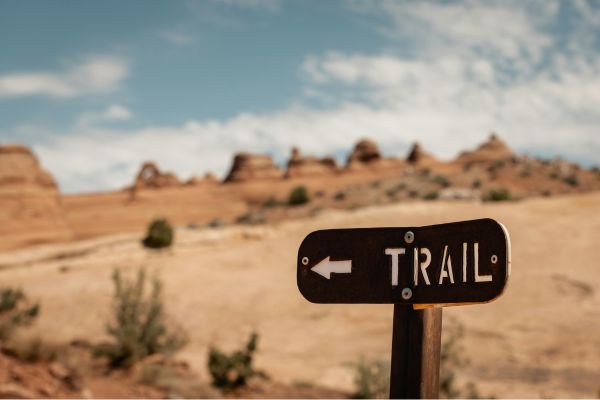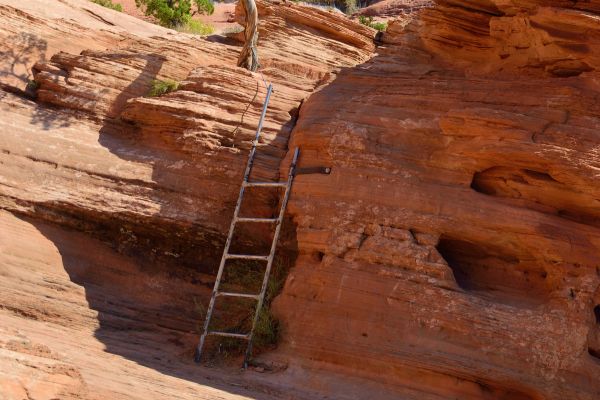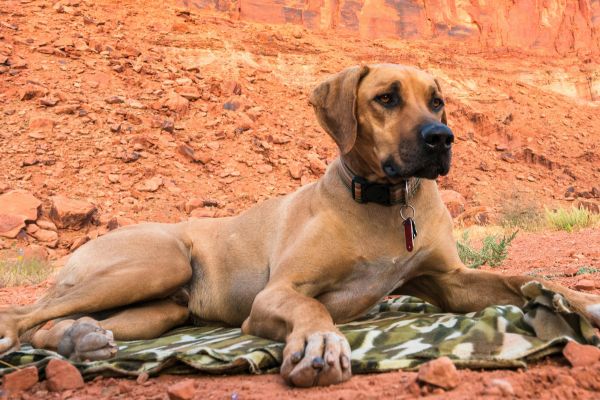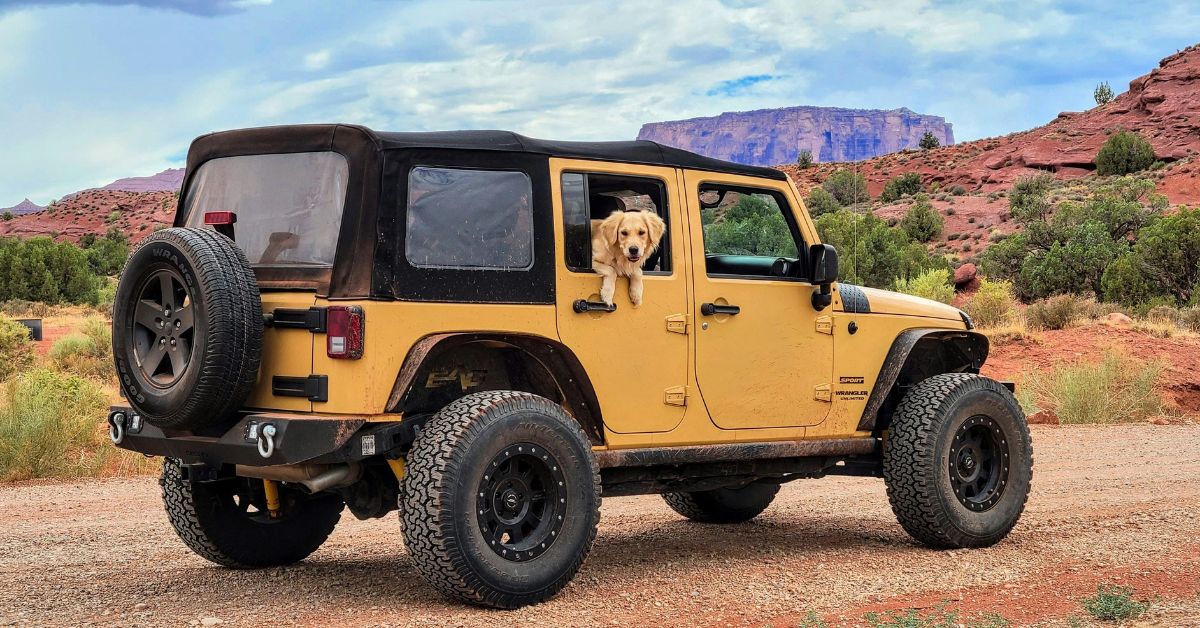Corona Arch Dogs Guide: Trails, Ladders, and Leashes
Corona Arch dogs are more than just visitors — many hikers bring their four-legged companions to enjoy the red rock views, the adventure trails, and the unique terrain that makes this hike memorable.
If you’re planning to explore Corona Arch (near Moab, Utah) with your dog, it’s helpful to know what to expect: leash rules, tricky ladder/rail/chain sections, safety, and tips to make it a fun and stress-free outing for both of you.
Table of Contents
Dog-Friendly Perks & Constraints
While many trails in Arches National Park strictly forbid dogs off the paved roads, Corona Arch is located outside the National Park boundary on BLM (Bureau of Land Management) land, which means dogs are allowed on the trail.
However, “allowed” doesn’t mean unconstrained: you must use a leash. Note that leashed pets are allowed on the Corona Arch Trail.
As with any outdoor outing, you’ll want to bring extra water, watch for heat and sun exposure, and keep an eye on how your dog is doing (panting, heat stress, footing, etc.)
Some hikers report that larger or less agile dogs may struggle at certain sections (e.g. slickrock, ladder) and may need assistance.
In short: Corona Arch is “dog-friendly,” but only with careful planning and awareness of the trail’s more challenging bits.
Corona Arch Trail Overview & What to Expect

The Corona Arch Trail is about 3 miles round trip (approximately 1.5 miles each way) with an elevation gain of around 400–440 ft.
Here’s a rough sequence:
- Start from the trailhead, hike up a rocky slope to a BLM register box and cross railroad tracks. (These tracks serve potash transport lines.)
- Continue across slickrock and sandy scrub, following cairns and occasional green paint markers.
- You’ll encounter cable safety lines (anchored cables) on steeper slickrock slabs. Use these as handrails/assists while navigating exposed terrain.
- Shortly afterward, climb a metal ladder (about 4–5 steps) to ascend a ledge and continue across a bench of slickrock to the arch itself.
- On the way you’ll also pass Bowtie Arch and possibly Pinto Arch before arriving at Corona Arch.
Because of the cables, ladder, and some exposed terrain, parts of the trail are more technical than average. Some hikers choose to turn around after the first cable if they’re uncomfortable with the ladder or higher exposure.
Ladder & Rail (Cable/Chain) Section: Tips for Dogs & Owners

This is the part many dog-owners worry about. Here are strategies and considerations to handle it well:
What the ladder/rail section looks like
- There’s a short metal ladder (roughly 4–5 steps) that helps you climb a ledge.
- Some slickrock slopes have safety cables or chains anchored to help hikers pull up or balance.
- The cables sometimes assist through steps carved into sandstone.
Getting your dog through
- Some people lift small dogs up the ladder by hand. For small or agile breeds this is often manageable.
- Larger dogs may need assistance or alternative path-finding (slower, cautious ascent) near the ladder.
- Use a sturdy harness rather than a collar, so you can provide support without choking.
- If your dog is hesitant, allow them to approach slowly, encourage with treats or calm voice, and assist as needed.
- Be very cautious of footing: wet or smooth sandstone is slippery. Use the cables or chains for balance where available.
- For the cable/chain sections, some dogs may struggle with grip or pacing: go slowly, make sure each paw placement is secure before advancing.
If at any point your dog seems uneasy or exhausted, it’s often better to turn around safely than force the section.
Leash Rules & Etiquette
Because the trail is open to dogs, there are some key rules and etiquette to follow:
- Leash required: Dogs must remain on leash for the entire hike.
- Safety & Precaution: Keep leash short on narrower or exposed sections to avoid snagging on rock or interfering with other hikers.
- Yield to people: When encountering other hikers or tight spots, give room and pause if needed.
- Pick up after your dog: Pack out waste; leave no trace.
- Control noise: Barking near cliffs or echoes can startle wildlife and other hikers.
- Heat and shade awareness: The trail has minimal shade; dogs can overheat quickly. Plan hikes early morning or late afternoon in hot seasons.
- Paws protection: In the intense desert sun, sandstone can get scorching. Consider booties or hike early/late to keep paw pads safe.
- Water breaks: Bring ample water and a collapsible bowl. Your dog needs hydration just as much as you.
Note: Off-leash is not permitted on this trail, and in nearby Arches National Park most trails disallow dogs entirely—hence Corona Arch is a rare exception nearby.
Safety & Preparation Tips

- Start early (sunrise) or in cooler periods of the day to avoid heat stress.
- Bring extra water for both you and your dog.
- Use proper footwear and ensure good grip for both human and canine footing.
- Keep a basic first aid kit (bandages, tweezers, antiseptic) including paw care items.
- Monitor your dog closely. Lagging behind, excessive panting, or refusal to proceed are signs to slow down or turn back.
- Take breaks in shaded spots where possible, and let your dog rest off the trail.
- Use a harness instead of a collar for better control and safety on steep sections.
A Pet-Friendly Moab Adventure
If you’re bringing your dogs and is willing to manage some steeper, technical sections, the payoff is spectacular red-rock views, a dramatic arch, and a shared experience. The ladder and cable/rail parts of the trail present logistical challenges (especially for some dogs), but with a sturdy harness, patience, and careful technique, many have succeeded.
Just remember: leash rules are strict, water is essential, heat is unforgiving, and safety must be your top priority. When done thoughtfully, the hike to Corona Arch can be a rewarding and unforgettable outing for you and your dog.
Corona Arch Dogs FAQs
Is a Corona Arch bigger than a Delicate Arch?
Yes. Corona Arch is actually larger than Delicate Arch. It stands about 140 feet high and 105 feet wide, while Delicate Arch is roughly 46 feet high and 32 feet wide. Because Corona Arch is outside Arches National Park, it’s also less crowded, making it a great alternative for those who want to see a massive sandstone arch without the park entry or heavy foot traffic.
Can you rappel off Corona Arch?
No, rappelling is no longer allowed at Corona Arch. The activity was banned after several safety incidents and excessive wear on the rock. Visitors are now encouraged to enjoy the view from below and respect the preservation rules. It’s still one of the most photographed arches in the Moab area and doesn’t require ropes to reach.
Why is it called the Corona Arch?
The name “Corona Arch” comes from its halo-like shape, which resembles a crown or the sun’s corona during an eclipse. The name highlights its smooth, curved silhouette that glows orange and red under the desert light—especially during sunrise and sunset, when the arch truly shines against the canyon walls.
Is Corona Arch kid friendly?
Yes, with supervision. The trail is about three miles round trip and rated moderate, with open slickrock and a few steep spots. Kids can handle it if they’re used to hiking, but parents should take extra care near the ladder and cable sections. Many families stop before the ladder if it feels too challenging, and still enjoy fantastic views.

